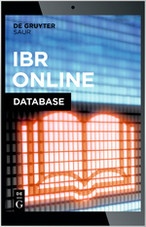- 12 December 2020
Article/Publication Details
Views: 2153
CHALLENGING INGARDEN’S “RADICAL” DISTINCTION BETWEEN THE REAL AND THE LITERARY
| Title in the language of publication: | CHALLENGING INGARDEN’S “RADICAL” DISTINCTION BETWEEN THE REAL AND THE LITERARY |
| Author: | HEATH WILLIAMS |
| Issue: |
HORIZON. Studies in Phenomenology. Vol. 9, №2 (2020), 703-728 |
| Language: | English |
| Document type: | Research Article |
| DOI : 10.21638/2226-5260-2020-9-2-703-728 | PDF (Downloads: 2127) |
Abstract
Ingarden’s phenomenology of aesthetics is characterised primarily as a realist ontological approach which is secondarily concerned with acts of consciousness. This approach leads to a stark contrast between spatiotemporal objects and literary objects. Ontologically, the former is autonomous, totally determined, and in possession of infinite attributes, whilst the latter is a heteronomous intentional object that has only limited determinations and infinitely many “spots of indeterminacy.” Although spots of indeterminacy are often discussed, the role they play in contrasting the real and literary object is not often disputed. Through a close reading of Ingarden’s ontological works and texts on aesthetics, this essay contests the purity of Ingarden’s ontological approach and the ensuing disparity between real and literary object, particularly on the question of spots of indeterminacy. I do this by demonstrating the following five theses: 1) Ingarden’s claim that the real object has an infinitude of properties belies an epistemology, and we should instead conclude that ontologically the real object’s properties are finite. 2) Ingarden’s a priori argument that absent properties of real objects are ontologically determined is unsound. 3) The radical difference between the infinitude and finitude of givenness and absence of the real and the literary object ought to be relativised. 4) Indeterminacies within the novel are concretised in much the same way that absent properties of real objects are intended. 5) Literature makes claims that have a truth value that we can attribute to their author.
Key words
: Ingarden’s aesthetics, Ingarden’s ontology, real and literary objects, spots of indeterminacy, finitude and infinitude, truth in literature.
References
- Bernard-Donals, M.F. (1994). Mikhail Bakhtin: Between Phenomenology and Marxism. Cambridge: Cambridge University Press.
- Byrne, T.(2020). Husserl’s 1901 and 1913 Philosophies of Perceptual Occlusion: Signitive, Empty, and Dark Intentions. Husserl Studies, 36, 123–139. https://doi.org/10.1007/s10743-019-09255-5
- Chrzanowska-Kluczewska, E.(2015). Textual Indeterminacy Revisited: From Roman Ingarden Onwards. Journal of Literary Semantics, 44(1), 1–21. https://doi.org/10.1515/jls-2015-0001
- Husserl, E.(1977). Phenomenological Psychology. Lectures, Summer Semester: 1925 (J. Scanlon, Trans.). The Hague: Martinus Nijhoff.
- Husserl, E.(1983). Ideas Pertaining to a Pure Phenomenology and to a Phenomenological Philosophy. First Book: General Introduction to a Pure Phenomenology (F.Kersten, Trans.). The Hague: Martinus Nijhoff.
- Husserl, E.(1989). Ideas Pertaining to a Pure Phenomenology and a Phenomenological Philosophy: Second Book. Studies in the Phenomenology of Constitution (R.Rojcewitz, & A. Schuwer, Trans.). Dordrecht: Kluwer Academic Publishers.
- Husserl, E.(2001a). Logical Investigations, Vol. 1 (J.N.Findlay, Trans.). London: Routledge.
- Husserl, E.(2001b). Logical Investigation, Vol. 2 (J.N.Findlay, Trans.). London: Routledge.
- Husserl, E.(2005). Phantasy, Image Consciousness and Memory (J.Brough, Trans.). Dordrecht: Springer.
- Ingarden, R.(1973a). The Cognition of the Literary Work of Art (R.A.Crowley, & K.R.Olson, Trans.). Evanston: Northwest University Press.
- Ingarden, R.(1973b). The Literary Work of Art. An Investigation on the Borderlines of Ontology, Logic, and Theory of Literarature (G.G.Grabowicz, Trans.). Evanston: Northwest University Press.
- Ingarden, R.(1983). On So-Called Truth in Literature. In P.J.McCormick (Ed.), Selected Papers in Aesthetics (133–162). Washington DC: The Catholic University of America Press.
- Ingarden, R.(2013). Controversy over the Existence of the World, Vol. 1 (A. Szylewicz, Trans.). Frankfurt: Peter Lang Edition.
- Ingarden, R.(2016). Controversy over the Existence of the World, Vol. 2 (A. Szylewicz, Trans.). Frankfurt: Peter Lang Edition.
- Iser, W.(1978). The Act of Reading: A Theory of Aesthetic Response. Baltimore: Johns Hopkins University Press.
- Johansson, I.(2010). Fictions and the Spatiotemporal World — in the Light of Ingarden. Polish Journal of Philosophy, 4 (2), 81–103.
- Markiewicz, H.(1975). Places of Indeterminacy in a Literary Work. In P.Graff, & S.Krzemiń-Ojak (Eds.), Ingarden and Contemporary Polish Aesthetics (159–171). Krakow: Polish Academy of Science.
- Mitscherling, J.(1997). Roman Ingarden’s Ontology and Aesthetics. Ottawa: University of Ottawa Press.
- Mulligan, K.(1995). Perception. In B. Smith (Ed.), The Cambridge Companion to Husserl (168–238). Cambridge: Cambridge University Press.
- Płotka, W.(2020). A Controversy Over the Existence of Fictional Objects: Husserl and Ingarden on Imagination and Fiction. Journal of the British Society for Phenomenology, 51(1), 33–54. https:// doi.org/10.1080/00071773.2019.1629553
- Poli, R.(1998). Levels. Axiomathes, 1(2), 197–211.
- Rand, A.(1957). Atlas Shrugged. New York: Signet Books.
- Thomasson, A.(1999). Fiction and Metaphysics. Cambridge: Cambridge University Press.
- Uemura, G.(2019). Demystifying Roman Ingarden’s Purely Intentional Objects of Perception. In N.de Warren, & S.Taguchi (Eds.), New Phenomenological Studies in Japan (139–162). Cham: Springer International Publishing.
- Voltaire. (2006). Candide. EBook: Project Guttenberg.

This work is licensed under a Creative Commons Attribution-NonCommercial 4.0 International License.

|
|
|
|
|

|
|
|
|
|

|
|
|
|
|
|
|
|
|
|
|
|
|
|
|
|
|
|
|
|
|
|

|
|
|
|
|
|
|
|
|
|
|
|
|
|
|
|
|
|
|
|
|
|
|
|
|
|
|
|

|

|
Social networks:





